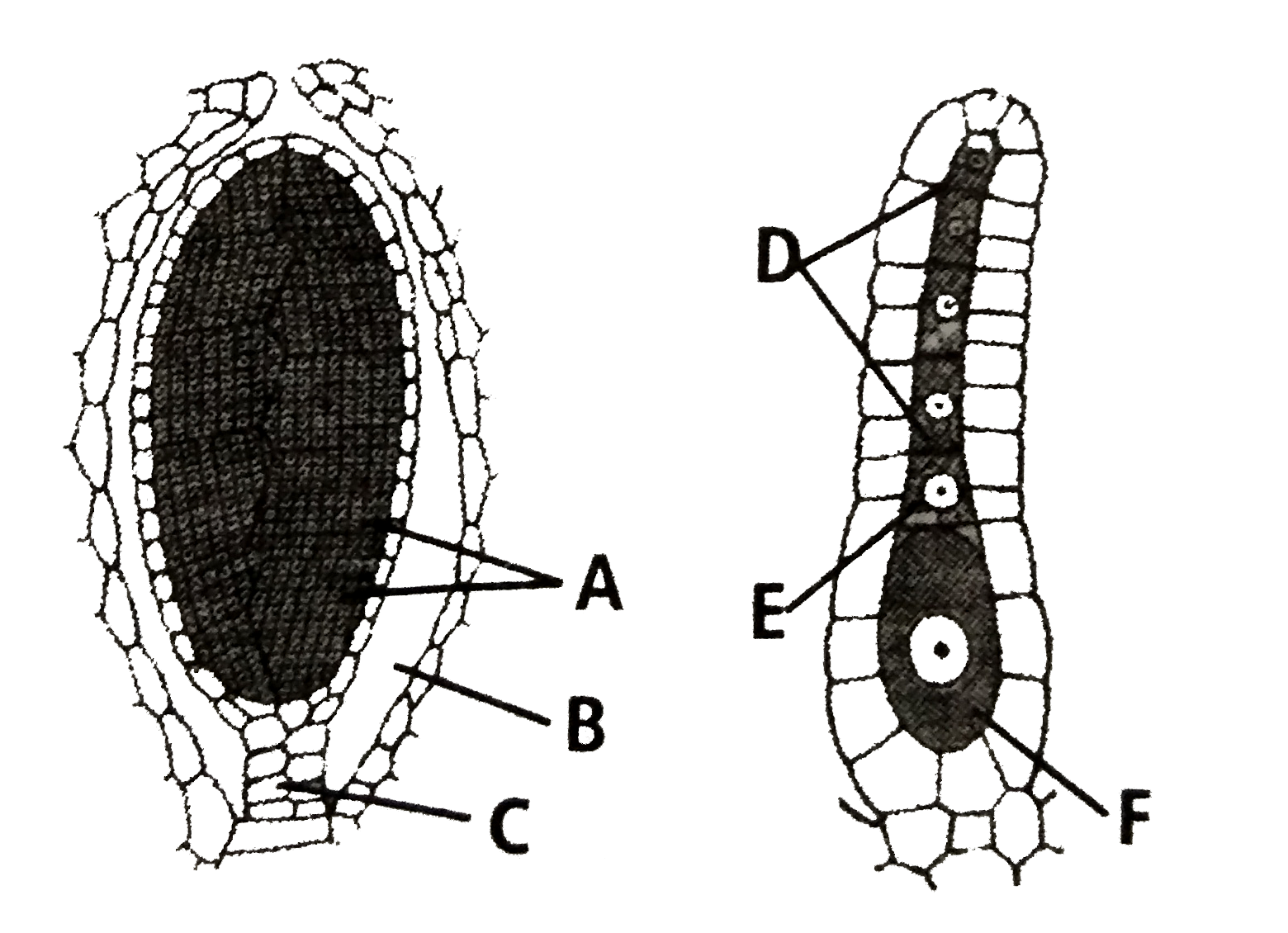Neck canal cells in Dryopteris are
One with two nuclei
Two
One with one nucleus
Four.
The correct Answer is:A
Step-by-Step Solution:
1. Identify the Organ: The question asks about neck canal cells in Dryopteris, which is commonly known as wood fern.
2. Understand the Structure: The archegonium, which is the female reproductive structure in ferns like Dryopteris, is flask-shaped and has a cylindrical neck.
3. Examine the Neck Canal: Within the neck of the archegonium, there is a central canal. This canal is surrounded by neck canal cells.
4. Count the Neck Canal Cells: The neck canal consists of four vertical rows of neck canal cells that enclose the canal. However, inside this canal, there is a specific type of cell.
5. Identify the Specific Cell: Inside the canal, there is one long neck canal cell that is notable for having two nuclei. This cell does not have a cell wall separating the nuclei, which allows them to appear as one.
6. Conclusion: Therefore, the correct answer to the question is that there is one neck canal cell in Dryopteris, and this cell contains two nuclei.
Final Answer: The neck canal cells in Dryopteris are 1 with 2 nuclei (Option A).
---
Topper's Solved these Questions
- KINGDOM PLANTAE OR METAPHYTA BOOK - DINESH PUBLICATION ENGLISHCHAPTER - KINGDOM PLANTAE OR METAPHYTA EXERCISE - CYG
20 Videos
- KINGDOM MONERA (THE PROKARYOTES)BOOK - DINESH PUBLICATION ENGLISHCHAPTER - KINGDOM MONERA (THE PROKARYOTES)EXERCISE - CHECK YOUR GRASP
20 Videos
- KINGDOM PROTISTA (UNICELLULAR EUKARYOTES)BOOK - DINESH PUBLICATION ENGLISHCHAPTER - KINGDOM PROTISTA (UNICELLULAR EUKARYOTES)EXERCISE - CHECK YOUR GRASP
19 Videos
Similar Questions
Knowledge Check

Refer to the following figures regarding division bryophyta.
(i). 'A' are the androcyte mother cells of the antheridium,
which give rise to a large number of biflagellate male gametes.
(ii). 'B' is the autheridial chamber and 'C' is multicellular stalk of antheridium.
(iii). 'D' and 'E' respectively represents venter canal cells and neck canal cell of the femal sex organ.
(iv). 'F' is the egg cell of the archegonium, which usually possesses severatl female gameters.
Which of the following combinations of above statements is incorrect?A(i) and (ii)B(iii) and (iv)C(ii) and (iii)D(i) and (iv)
The number of neck canal cells in the archegonium of Selaginella is
View SolutionArrange the following cells in the archegonium of bryophytes from base to apex : neck canal cells, venter canal cell, cover cells, egg cell.
View SolutionIdentify the correct pair of characters with reference to Pteris. I, Neck canal cell is uninucleated II Stem grows vertically in soil III. Apogamously produced sporophytes are haploids IV. Open dichotomous venation in leaflets
View SolutionSelect correct statements for non-vascular archegoniates. Br a. Independent sporophyte & gametophyte. Br b. Dependent sporophyte. Br C. Multicellular independent gametophyte. Br d. Many neck canal cells in female sex organ. Br e. Homosporous and mitospores are formed.
View SolutionWhat is correct?
(a) Protonema of moss and prothallus of Dryopteris are sporophytic
(b) Protonema of mos and prothallus of Dryopteris are gametophytic
(c) Moss protonema is sporophytic, Pteris prothallus is gametophytic but plant body of Pteris and Funaria are gametophytic
(d) Plant body of moss is gametophytic while that of Dryopteris is both gametophytic and sporophytic
View SolutionIn the archegonium of Dryopteris, the number of neck canal cells is/are
View SolutionPresence of cilated antherozoids in Dryopteris indicates
View Solution
